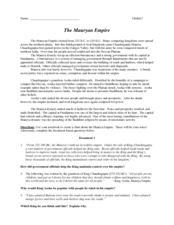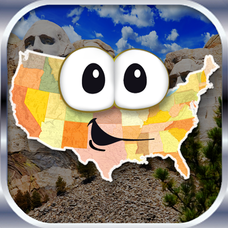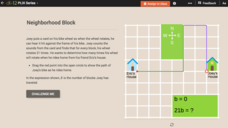Curated OER
Conserving Water through Art!
Students study water conservation. In this water conservation lesson, students investigate the scarcity of water and determine reasons for conserving water. Students estimate how much water they use in one day and identify ways to...
Curated OER
Snack Smart!
Students discover healthy snacks. In this healthy snacks lesson, students create a healthy snack. Students sample a simple healthy snack.
Curated OER
Stabilization Wedges Game
Teamwork and critical thinking combine to for a creative lesson on reducing greenhouse gas emissions. Ebullient environmental studies learners play a game in which they strategize how to place colorful energy wedges together to create a...
Curated OER
The Mauryan Empire
Create a chart about the Maurayan Empire. Read the provided passage, make a chart, then analyze 3 excerpts. Questions need to be answered for each of the primary source excerpts. Making a reading chart is a good way to take notes!
Curated OER
The Violence in Syria
Several New York Times articles were used to create informative reading material. Kids click on each of the embedded links to access a resource related to Syria and the Middle East conflict. They then answer the nine questions. Note:...
Curated OER
Letter of Complaint
Learners analyze this letter of complaint to the city council by answering nine short-answer questions. They examine author's purpose, word choice, claims, rhetorical questions, and general observations. There is a focus on constructive...
Science Friday
Pinhole Viewer
Take a peep into optics. Pupils watch a video about a large Polaroid camera before building pinhole viewers. The scholars then create different types of viewers and compare them to determine which provides the best image.
Skyscraper Museum
Building a Skyscraper
Creating buildings that reach hundreds of feet into the sky is no easy task. The third instructional activity in this series begins with four activities that engage young architects in exploring the major challenges that are faced when...
Poets.org
Love as a Two-way Street
Create an abundance of understanding, as your high school learners learn to analyze multiple love poems. Part one of this resource has learners define what love is, examine art that reflects the love between Robert and Elizabeth...
Freecloud Design
Stack the States™
Kids have fun learning US geography and state facts, including capitals, nicknames, major cities, and landmarks. They can choose between the game, or informational flashcards for each state.
Grammaropolis
Grammaropolis - Complete Edition
Allow the residents of this grammar-packed city to teach your pupils the parts of speech with songs, videos, quizzes, and more. Kids can get to know each part of speech and sing along with the catchy tunes!
British Museum
The Kingdom of Benin
Discover the society of Benin through analysis of several artifacts and rich primary source materials. Here you'll find worksheets on topics as the work of Benin craftsmen, the influence of the all-powerful Oba, explanations for the...
It's About Time
Inferences of Waves
Building on the previous lesson, scholars use Slinkies to create standing waves. They graph waves on a calculator and then apply their knowledge to both sound and light waves. This is the fourth in a series of nine lessons.
Mathematics Assessment Project
Middle School Mathematics Test 3
Real-life mathematics is not as simple as repeating a set of steps; pupils must mentally go through a process to come to their conclusions. Teach learners to read, analyze, and create a plan for solving a problem situation. The provided...
Alabama Learning Exchange
Edgar Allan Poe's Journey Through Life and Literature
How was Edgar Allan Poe able to create "intriguing, memorable, and lasting literature"? To answer this question, learners analyze the syntax, diction, and characterizations in Poe's poems and short stories and compare the impact of these...
CK-12 Foundation
Exponent Properties with Variable Expressions: Size of Solar Tornadoes
Exponents may have your pupils' heads spinning after an engaging lesson as they connect properties to tornadoes! Learners compare a distance between cities to the distance across a solar tornado. They use exponent properties to find the...
Channel Islands Film
Once Upon A Time (Saxipak’a): Lesson Plan 1
As part of a study of the history of the Chumash on California's Channel Island chain, class members view the documentary Once Upon a Time, respond to discussion questions, and create a timeline for the different waves of migration.
CK-12 Foundation
Single Variable Expressions: Neighborhood Block
The number of bicycle wheel turns is as good as any way to describe the distance from school to home. An interactive lets young mathematicians determine the number of city blocks a person bicycles. They use this information along with an...
Annenberg Foundation
Gothic Undercurrents
Terror, mystery, excitement. American writers of the 19th century, including Nathaniel Hawthorne, Herman Melville, and Emily Dickinson, used these elements to create morally ambiguous tales that challenged the prevailing belief in...
Boston Symphony Orchestra
The Elements of Music—How do Composers Plan?
The introduction to Tchaikovsky's Swan Lake and the finale of his Symphony No. 4 provide young musicians with an opportunity to investigate the music elements composers employ to develop the themes they want to create. They compare the...
Curated OER
Merging New Technology with Old Stories
Is your city's history a mystery to your class? Ever wonder if your county contains a bounty of folklore? Young computer scientists incorporate technology with time-honored tales during a project with both individual and group...
New York City Department of Education
Isabella’s Garden
Create rows and rows of vegetables. Pupils use their knowledge of multiplication to find the number of vegetable shoots planted in a garden and ways to arrange the vegetables in the performance task. Teachers use the suggested unit...
NOAA
Climate, Weather…What’s the Difference?: Make an Electronic Temperature Sensor
What's the best way to record temperature over a long period of time? Scholars learn about collection of weather and temperature data by building thermistors in the fourth installment of the 10-part Discover Your Changing World series....
American Museum of Natural History
Pterosaurs: The Card Game
Piecing together the past is a challenging endeavor. Learners get a taste of that challenge as they play a game that incorporates several components such as trophic levels, geological time periods, and catastrophic events. Pairs work to...

























